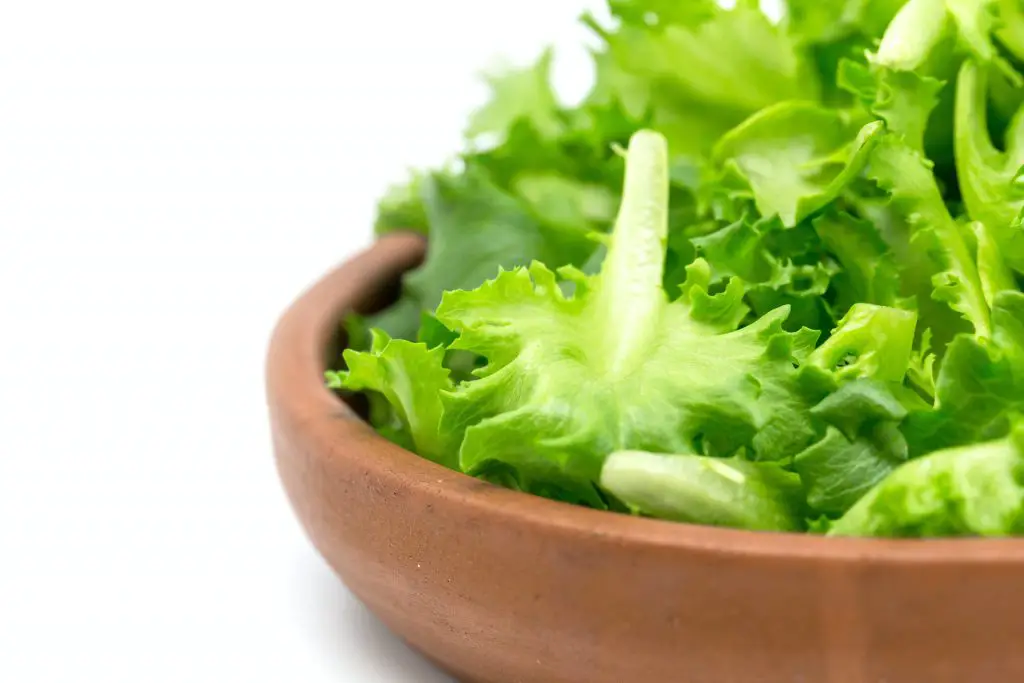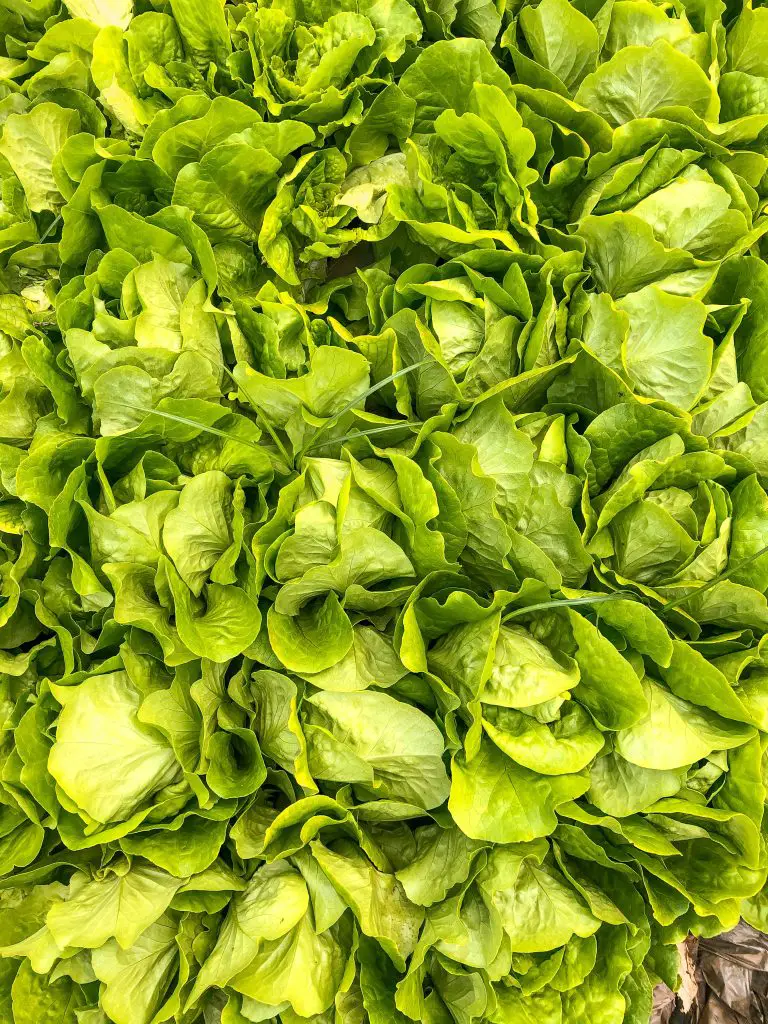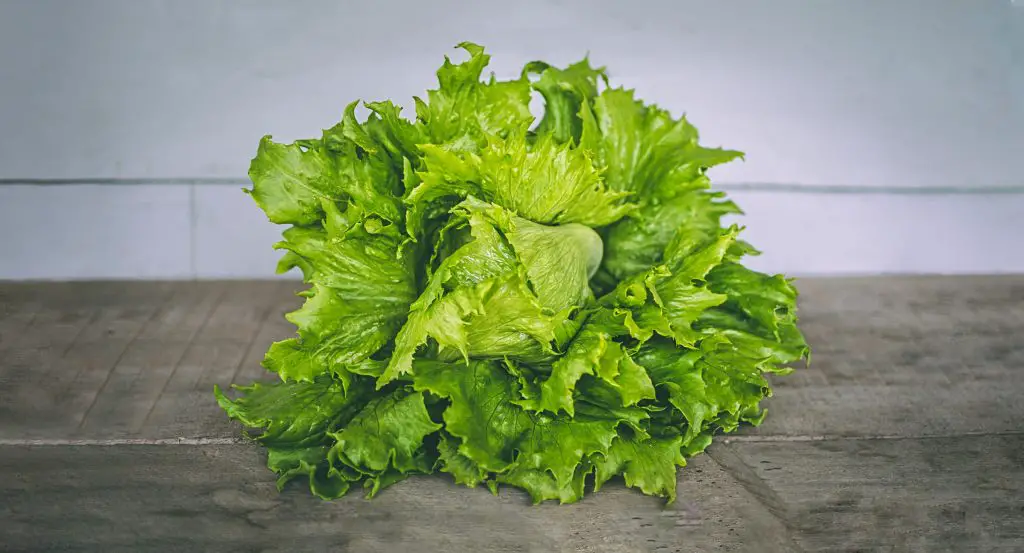How Much Does One Lettuce Plant Yield? Lettuce is one of the most widely eaten vegetables in the world and is eaten almost daily by many people either in a salad or as a condiment in something like a burger or a sandwich. However, to get the very best quality produce it is best to grow lettuce at home in your own garden because you can pick it fresh ready to go. However one of the most common questions is how much lettuce can you use from a single plant?
Lettuce plants typically yield approximately 2.6 to 5.3 oz (75 to 150g) pending upon how the plant is growing and the particular variety that is selected according to a study by Sher-e-Bangla Agricultural University. The study looked at how to maximize the output of lettuce plants by varying the spacing and the level of nitrogen in the soil and unsurprisingly the study found that increased spacing and increased nutrient levels increase the yield.
The widest spacing that was tested was a row spacing of 16 inches (40 cm) and inter-row spacing of 12 inches (30 cm). At this spacing, a result of 5.1oz (144g) was recorded. However, this particular study focused on headed lettuce which was harvested once rather than. However, a similar study by the University of Buenos Aires produced similar results in terms of the yield.

What Is Better To Grow Loose Leaf Or Headed Lettuce Varieties?
There is an enormous range of lettuce varieties that can be grown in the backyard and one of the most common questions is is it better as a home gardener to grow loose-leaf varieties or headed varieties. My personal opinion is that for the home gardener you are far better off growing loose-leaf lettuce varieties as it provides the opportunity to harvest the plants frequently which spreads the yield across several weeks.
A headed variety that is removed in a single harvest will result in you having a glut of lettuce followed by a period of no lettuce which is far from ideal for the home garden.
However, those varieties that are considered traditional-headed varieties can also be harvested as loose-leaf varieties as well by continually picking the outer leaves of the plants. So while there is a distinction in many people’s minds between headed varieties and those that can be cut and come again this distinction is largely based upon what we are presented within the supermarket. The reality is that lettuce varieties can be treated as cut and come again plants irrespective of the variety that is selected.

How To Maximize The Yield Of Lettuce Plants
For the home gardener, as discussed above, it is ideal if you can come multiple times to the same plant and get several yields over several weeks. However, there is one important thing that you can do to ensure that the period between harvesting is reduced.
This is to pick the outer leaves of the lettuce to ensure that the inner leaves, which are the youngest on the plants, remain intact. If you do this it means that the plant always has some new leaves that are approaching the point of being picked.
The other important thing to do with lettuce plants to optimize your overall yield is to be absolutely ruthless with disposing of plants that no longer have edible leaves. Lettuce plants are notorious for becoming bitter quite quickly, particularly, in hot weather. Once this happens the leaves are unpalatable.
The bitterness within the plants usually develops as the plant is approaching the point at which it is preparing to send up a flower stork. However, the bitterness will start to appear even prior to this point so the plants can look quite healthy but have quite a bit of taste. As such it is advisable to taste the leaves as you pick them to ensure that you are getting a good quality crop.
Once the plants have reached the point at which they have become bitter the plants should be removed immediately irrespective of how healthy the plant looks as it is taking up valuable garden space that could be used for producing other crops.

How to ensure that you have a continuous supply of lettuce
As mentioned above lettuce plants can become bitter very quickly particularly when the plant is stressed in hot weather. There are a couple of strategies that you can do to extend the usable life of the plant which include watering the plant regularly and also planting at least some of your crop in shade to reduce the peak temperature in summer.
Both of these measures will help to reduce the probability of the plant bolting however they will only delay it they will not prevent it. As a result of this, it is necessary to have successional crops ready to go to ensure you have a consistent supply.
However, for the vast majority of inexperienced gardeners, it is typically to have a period of the year where they have no lettuce available because it has become bitter and the new batch of plants is not yet large enough to harvest from. This situation often arises at the peak of summer because gardeners underestimate how quickly the plant will become bitter and therefore they do not plant seeds frequently enough.
But there is a simple rule that can be applied that will help gardeners to get in a routine of planting seeds regularly to ensure a constant supply. The rule is extremely simple which is once a tray of lettuce is ready to be planted out into the garden. A new tray of lettuce should be sown at the same time.
The advantage of doing this is that the length of time taken for seedlings to go from seed to transplanting there is throughout the year is based upon the temperature in which are growing the plants. In the warmer months of the year, the growth rates will be higher which means that the planting of lettuce crops will be more frequent which is ultimately what is required to ensure consistent supply.
In most cases throughout the year this will work well, however, I do find at the height of Summer that there is always a short period of the year where I don’t have enough lettuce available. One of the strategies that you can use to overcome this issue is to plant two trays of seedlings in each sowing. One of those trays needs to be planted in shade and while the other can be planted in direct sun. This will hopefully spread the rate of growth and give you a good chance to get a consistent supply before the plant goes to seed.
I hope you found this article useful and have great success growing your own lettuce at home if you have any specific questions or comments please leave them in the section below.
Relevant Articles
How Can You Tell The Difference Between Cabbage And Lettuce?
Is Kale Lettuce? Is There A Difference?
Will Deer Eat Lettuce? And How To Stop Them

